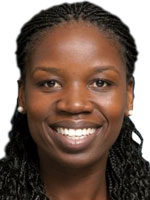Trial techniques
From voir dire to closing
There is no one way to pick a jury or try a case. Every trial lawyer has a style and approach that is unique to them. It is developed over years of practice and is constantly evolving. Sometimes we have to modify our approach to trying cases based on the jurisdiction we are in, the political climate at the time, or simply the changing times. Even advancements made in technology cause us to adjust how we present evidence and argue our cases.
In this issue, we will learn how some of our association’s most skilled attorneys are advancing their trial techniques at every stage of the trial – from how to select a jury to delivering a closing argument. We begin with voir dire.
David Hoffman sets the stage with his article, Jury selection for civil trials: A primer. Hoffman’s treatise points us to the legal source of some of the most critical components of jury selection. This includes examining the qualifications to be a trial juror and how to intelligently exercise peremptory/cause challenges.
Next we have Brian Panish, Larry Hall and Adam Shea, some of this century’s most talented trial lawyers, discussing the psychology of today’s jurors – how they think and what drives their decision making. In their article, Jury selection for the 21st century, these authors offer useful tips on how to get the critical information needed from the jurors in order to build the panel best suited for your case.
In his article, Don’t let the court ruin your jury selection, Tony Stuart identifies the most common incorrect rulings made during jury selection. Stuart, a former CAALA president who now consults on jury selection, then outlines arguments that may help you convince your court not to make them. This includes the blanket limitation during jury selection to a set time period and the regular refusal of the use of jury questionnaires.
Dan Ambrose and Stephen King introduce us to a new and innovative way of selecting a jury. This method focuses on strict issue framing, channeling emotion and sticking to the script. It is unconventional, but battle tested. Many trial lawyers have begun to employ these techniques and have achieved positive results.
Jack Denove gives a complete overview of jury selection in his aptly titled article Everything you wanted to know about voir dire. It is informative, humorous and wonderfully written.
Carl Douglas looks at police-misconduct cases in Everybody’s watching: The new reality of excessive force cases. Specifically, he addresses how changes in technology and the use of video cameras have influenced not only how jurors see our cases, but how we try them.
Next we explore direct examination and damages. Christa Ramey tackles direct examination head on in her article, Direct examination: Telling the story. Christa makes the point that your direct examination has to flow in a well-structured manner so as to inform, not confuse. It has a beginning, middle and end.
Geoffrey Wells offers his approach on how to argue general damages at trial. Geoff takes us through general considerations such as not over-reaching with your general damages argument if liability is thin; he then looks at CACI instructions and what you need to teach the jury about completing the verdict form.
Rounding out this issue with discussions of closing argument are Mike Alder and Genie Harrison.
Harrison offers her thoughts on how to best connect with the jury during closing. She believes this is the opportunity to support your “plaintiff jurors” with ammunition they can use during deliberations.
Alder masterfully outlines closing arguments in personal injury cases, starting with your explanation of the jury instructions and then focusing on how to best ask for the amount of economic and general damages you want them to award.
Finally, no trial team is complete without the assistance of the paralegals, law clerks and legal assistants. Rose Gutierrez provides useful tips to legal support staff in her article How to support attorneys engaged in trial.
After reading this issue, it is my hope that you not only pick up new techniques to advance your skills and try your cases, but that you feel inspired to reach outside of your comfort zone and employ some of these techniques in your next trial. With the world evolving, so should we.
Ibiere N. Seck

Ibiere N. Seck is a Partner and Trial Lawyer at The Cochran Firm - California with a focus on complex catastrophic injury, wrongful death, traumatic brain injury, police misconduct and sexual assault of minors. She exclusively represents plaintiffs in civil litigation/trial and prides herself in being a zealous advocate on an endless pursuit for justice on behalf of people who have been wronged, harmed or injured. Since 2010, she has been recognized as a “Rising Star” by the Super Lawyers publication. She was the recipient of CAALA’s 2014 Rising Star Award, and the National Bar Association’s 2015 Nation’s Best Advocates 40 Under 40. In 2016, Ms. Seck was recognized in SuperLawyers Top 100 Up-and-Coming Attorneys in Southern California and SuperLawyers Top 50 Up-and-Coming Women Attorneys in Southern California. She was also the recipient of CAOC’s 2016 Street Fighter of the Year award. Ibiere is a board member of the Los Angeles Trial Lawyer’s Charities, Consumer Attorneys Association of Los Angeles, Consumer Attorneys of California and John M. Langston Bar Association, Los Angeles County Bar Association Litigation Section Executive Committee and Westside Children’s Center. She is also a volunteer attorney with the Mesereau Free Legal Clinic in South Central Los Angeles where she advocates on behalf of low-income Californians and under-served communities of color.
Copyright ©
2026
by the author.
For reprint permission, contact the publisher: Advocate Magazine
